With the sun shining once
again and a new day dawning, we headed up to the northern end of Miami in the
hopes of catching up with what is now a very rare and unusual species in
America – the Smooth-billed Ani.
 |
| Smooth-billed Ani |
Found only in southern Florida in the US, Smooth-billed
Anis are in fact a bird of the Neotropics, abundant throughout Central &
South America and the West Indies, with Florida right on the edge of their
range. Becoming a regular nesting bird back in the 1930’s, since the 70’s
Smooth-billed Anis have undergone a tremendous decline, at one point even
thought to have disappeared from Florida entirely. Now, there is just one known
nesting pair, and still present for their second year, we couldn’t visit
Florida without stopping by at Loxahatchee Wildlife Refuge, the home of
America’s last known Smooth-billed Anis.
Already armed with gen as to
the precise location where the Anis favoured spot was in the huge marshy
expanse, we barely had time to admire the beautiful butterflies fluttering
around the towering cathedral like trees and vines in the car park. Zebra and Julia Heliconans gracefully manoeuvred
through the trunks, while only our second Carolina Wren of the trip belted out
its distinctive song from a nearby rock.
 |
| Carolina Wren |
Hurrying down the gravel track
alongside the canal on the very western edge of the reserve, Loxahatchee was
full to the brim of bird life. Green, Tricoloured, Little and Great Blue Herons
perched precariously in the swaying mangrove trees alongside Snowy and Great
Egrets, while American Coots and Common Gallinules dabbled in the marshy
inlets. There was barely time to stop to admire a lone American Purple
Gallinule stepping gingerly across the lily pads, while Boat-tailed Grackles
and Red-winged Blackbirds were both in abundance, their alien-like trills
echoing up through the reeds.
 |
| Tricoloured Heron |
 |
| Double-crested Cormorant |
 |
| Snowy Egret |
Approaching the patch of scrub
where the vast majority of Ani reports had been emanating from, we kept our
eyes peeled, an American photographer also joining us in the hunt. Passing off
a distant black blob perched on a grass stem far across the other side of the
water as just another Boat-tailed Grackle, I should have perhaps taken a look
through the scope instead of binoculars. With it still swaying on the grass 5
minutes later, the realisation hit me that perhaps this bird was just a little bit
too bulky and had far too long a tail to be just another Grackle. My eventual
suspicions soon proved to be correct, as getting Alex to check through the
scope he confirmed that it was indeed the Smooth-billed Ani – bingo! Expecting a lengthy
search, we had found one half of the pair almost instantly – far easier than we
had anticipated!
 |
| Smooth-billed Ani - record shot! |
Moving over to the other side
of the water and following the track towards the patch of reeds the Ani was
perched in, we approached with caution, not wanting to flush it and treading
carefully in the soft grass. With the Ani now right in front of us, this
unusual and prehistoric looking bird gave fantastic views as it climbed from
stem to stem, the glossy black plumage standing out and the smooth, curved bill
that separates it from the closely related Groove-billed Ani clear to see.
 |
| Smooth-billed Ani! |
Hopping down in to the clump
of grass and out of view for the time being, the Ani clearly hadn’t gone far,
the occasional rustling and movement in the reeds betraying it’s presence as it
hunted for insects below. Sure enough, after a patient wait, the Ani
re-emerged, clinging to a grass stem right in front of us and giving absolutely
incredible views – we really couldn’t have asked for any better!
A great addition to our Florida
trip and a bird that since I had learned were present back in 2015, had hoped
would stay until we got there. With presumed nesting in the summer of 2015, it
appeared this pair were nesting again, and through the course of the morning we
saw both individuals together, at one point the male even bringing the female a
courtship present of a large twig! Hopefully they bred successfully in
2016 and continue to delight visitors to Loxahatchee for years to come.
With the Smooth-billed Anis
well and truly in the bag, we drove to our next point of call, the excellent
Green Cay Wetlands situated just ten minutes away.
 |
| Green Cay Wetlands |
This wildlife oasis is
exactly how I imagined Florida to be, raised boardwalks winding through the
swampy marshes below, Alligators swimming underneath and birds flying all
around.
 |
| Alligator! |
We definitely weren’t disappointed – as soon as we set foot on the
boardwalk we were in awe. Herons and egrets probed in the water mere metres
away while American Coots and Common Gallinules dabbled below our feet. A
particularly impressive Anhinga proceeded to land directly in front of us on
the railings, its magnificent wings outstretched to dry off in the blazing sun
while it watched us out of the corner of its beady eyes.
 |
| Anhinga |
With such close views
we could really appreciate the sharp dagger-like bill of this subtly beautiful
bird, the sheen of the feathers bouncing back the sunlight and the contrasting
black and white plumage a sight to behold.
Often known as the snake bird, it
was clear to see why, and we often saw these unusual birds disappear slowly
under the water, neck still outstretched and just sinking under the surface
quite unlike any other water birds I’ve seen – no hint of a dive like
cormorants or mergansers.
Having discovered by accident
through e-bird that Green Cay Wetlands held a regular and well-known roost spot
of an Eastern Screech Owl, we made our way across the boardwalk to the patch of
palm trees where it could usually be found sitting.
Unfortunately, careless
photographers had vandalised the palm tree the owl frequented, cutting down
some branches and forcing fencing and warning signs to be erected to protect it.
Despite this, the Eastern Screech Owl could still be found sitting on its favoured
branch, and sure enough we were soon staring in to the glassy eyes of this
grumpy looking owl mere metres away from us at eye level.
 |
| Eastern Screech Owl |
Getting a series of
photographs capturing its rather menacing looking facial expressions, it was
great to see a species that until relatively near to travelling to Florida was
looking very unlikely we would catch up with. Indeed, this pixie-like
individual was our only bird of the trip, so we savoured the views of another
delightful owl species for as long as we could.
We also
struck it lucky with our next new bird of the day – a single Gray-headed
Swamphen sneaking stealthily through the reeds. Another introduced exotic in
Miami, but again now fully countable and accepted by the ABA, Gray-headed
Swamphen was previously an Asian subspecies of Purple Swamphen – only recently
elevated to full species level. Differing from the American Purple Gallinules
by their bright pink legs and red bills, we saw several throughout the day,
including a small family party later in the afternoon at the adjacent
Wakodahatchee Wetlands reserve.
 |
| Gray-headed Swamphen |
With the heat now blazing down
and with very little shelter on the exposed boardwalk, birding was extremely
hard work. Despite the destroyingly hot weather the lifers kept on coming thick
and fast. We caught up with our first Purple Martins of the trip - a large
group congregating around the Purple Martin nest boxes and soaring across the
sky, swooping down to take advantage of the abundance of insect prey.
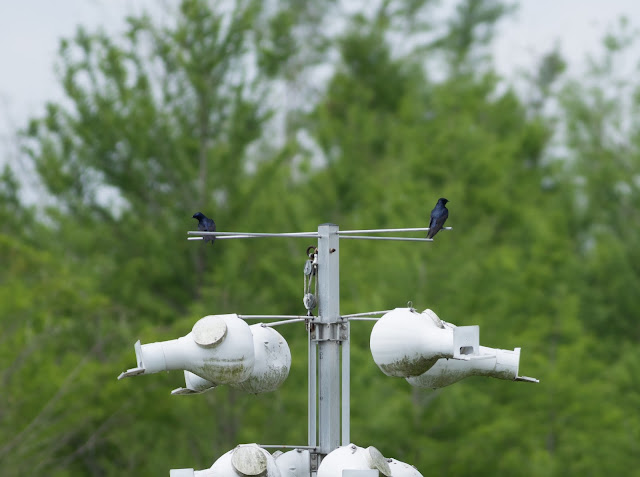 |
| Purple Martins |
At one
point the colony set off in alarm to attack an intruding Red-shouldered Hawk,
harassing it until it moved on in disgust.
 |
| Red-shouldered Hawk (minus eye!) |
American Bittern was our next
new bird; whilst sipping on the last of the juice from my bag Alex alerted me
to a large heron-like individual flying right overhead across the boardwalk before
dropping ungainly in to the reeds below. Exceptionally camouflaged, it took us
a while to pick it out as it proceeded to creep towards us, the huge yellow
eyes on constant watch as it hunted in the shallows. A great bird and totally
unexpected!
 |
| American Bittern |
With the intense heat now getting
unbearable and with none of our target Soras in sight, we headed to the visitor
centre to cool down and take a look at the interesting native fish and reptile
exhibits on display before moving on to our final point of call for the day –
Wakodahatchee Wetlands.
 |
| Green Cay had plenty of interesting reptiles and amphibians on display in the visitor centre |
Our second White-winged Dove feeding underneath the
bird feeder in the car park on the way out was a treat to see, and before long
we were treading the boardwalks of yet another fantastic swamp reserve.
Wakodahatchee is famous for
its roosting Wood Storks, and we got great views of these unusual looking birds
as they tended to their nests, joined by a noisy mass of Anhingas and
Double-crested Cormorants.
 |
| Wood Storks |
With a single Neotropic Cormorant nesting here, we
failed to locate it despite checking all the nesting trees thoroughly – this
species was clearly going to slip through the net during our time here.
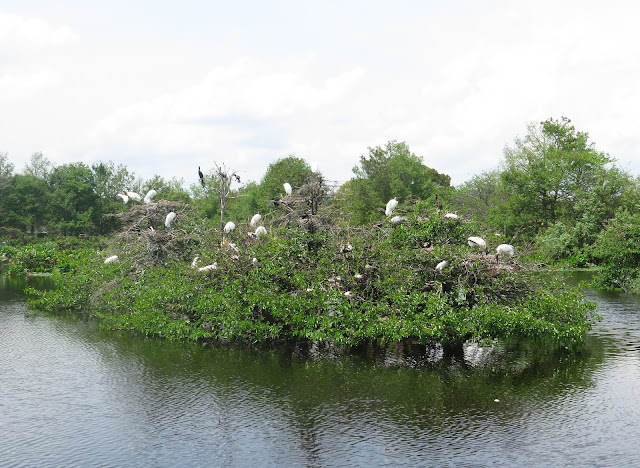 |
| The nesting colony |
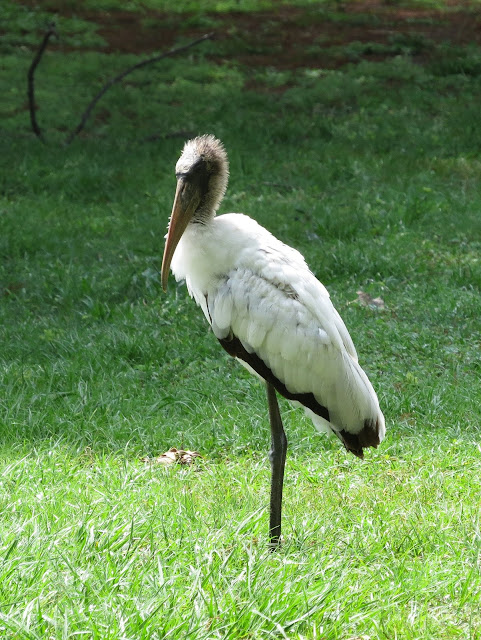 |
| Adult Wood Storks and juveniles were also stood obligingly around the reserve |
Exploring Wakodahatchee further also revealed a number of new reptile species for us, including several Cooters and an unidentified reptile species!
Despite being hauled out of the water on the banks, at the time we didn’t realise there were so many similar looking Cooter species in Florida, and my quick snapshots were sadly insufficient to ID them down to species level in a lot of cases.
 |
| Cooter sp! |
 |
| Peekaboo... |
We did however manage to catch up with some more American Purple Gallinules at Wakodahatchee, this time providing much closer views than at Lake Kissimmee and even allowing some photos.
Florida Softshell Turtles were also showing really well at Wakodahatchee, floating through the murky water just underneath the boardwalks and providing excellent close up views of of their pointed snouts and huge shells.
 |
| Florida Softshell Turtle |
The extreme temperature sadly meant our target Black-bellied Whistling-ducks were not on show during our
visit, more than likely sheltering in a cool spot to escape the heat. With up
to 40 showing well in previous weeks this was a definite blow. Never the less,
we got great views of up to 14 Gray-headed Swamphens foraging in the reeds at
the side of the boardwalk, some in family parties and putting on a great show.
 |
| Gray-headed Swamphens |
It was here that we also had our best views of Pileated Woodpecker – a species
that we had previously only seen in flight in New York – so it was fantastic to
get prolonged views as this extremely large and stunning woodpecker perched
obligingly on a tree across the swamp.
 |
| Pileated Woodpecker |
With the heat not abating and with
time moving on, we decided to head back to the hotel to cool off and relax,
stopping en-route to re-stock up the fridge with refreshing juice (the discovery
of Ribena on the shelves made me very happy indeed).
Enjoying a tasty evening meal
of pizza overlooking the harbour, two calling flyover parakeets kept their
identity a mystery as the sun set, and we headed back to the apartment ready
for the next day’s mission – the tricky task of locating the elusive Mangrove
Cuckoo.

























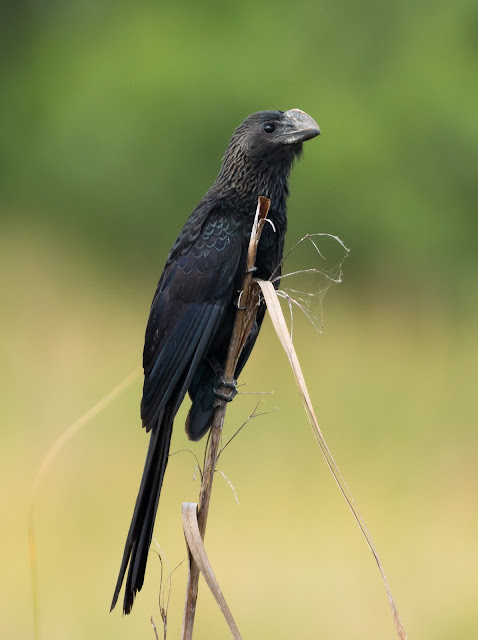








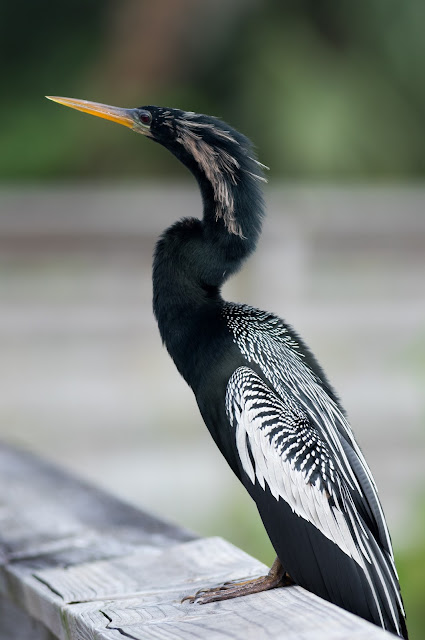



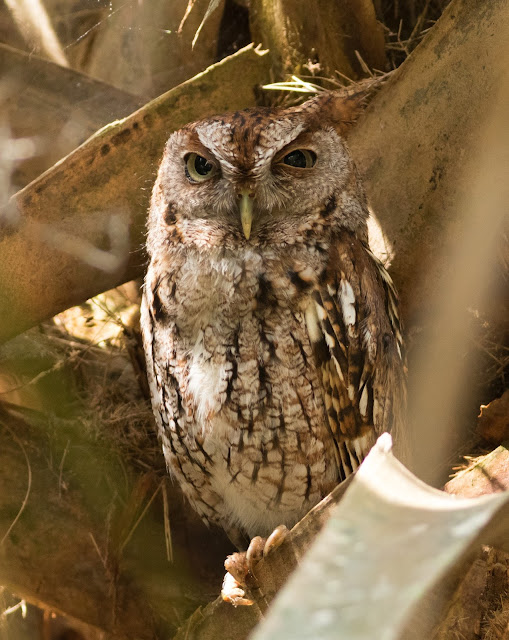





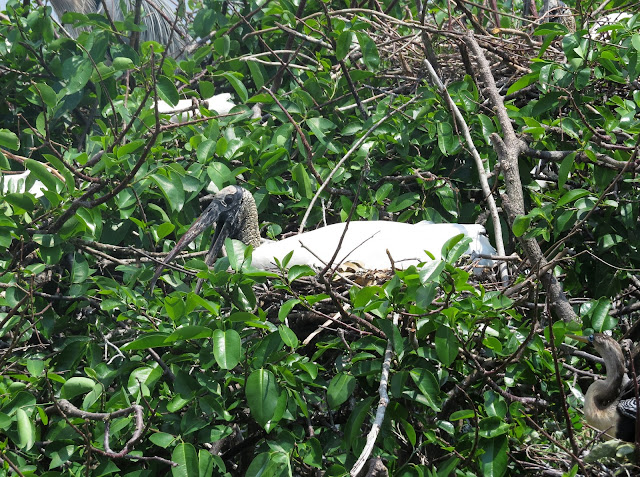

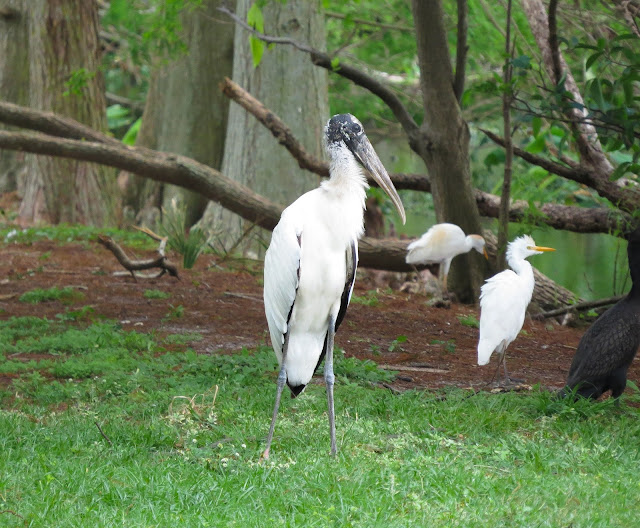













No comments:
Post a Comment